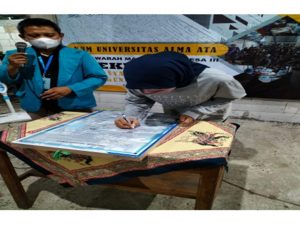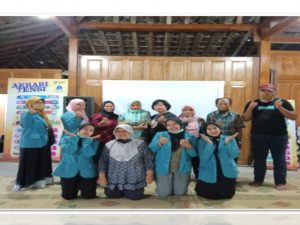
S1 Nursing Alma Ata – The global fight against the Covid-19 pandemic is far from over. Recently, there have been reported cases of the local transmission of a new variant, Omicron, in Jakarta, causing renewed concerns among the public. So, what does local transmission entail? According to the World Health Organization (WHO), local transmission of Covid-19 refers to the spread that indicates the location where the source of infection is within the reporting area. To put it simply, it is the local spread of the coronavirus occurring in the vicinity of a confirmed Covid-19 patient. Thus, local transmission has a more confined and restricted reach, but the resulting impact remains equally perilous.
Aside from local transmission, the World Health Organization (WHO) has introduced a new term called Imported Case. Imported cases have a wider scope and only indicate locations where all cases were acquired outside the reporting area. Beyond these two terms, there are also other designations such as Community Transmission and Interrupted Transmission. Community transmission is characterized by the presence of confirmed cases in a substantial number of positive Covid-19 cases. Meanwhile, Interrupted Transmission indicates locations where there has been an interruption in the spread of the virus.
Upon understanding the mentioned terms, it becomes imperative to heighten our vigilance as the Omicron virus spreads much more rapidly compared to the Delta variant. This virus can result in infections in individuals who have received vaccinations or have previously recovered from the coronavirus. The most efficient preventive measure is the proper use of masks. However, at present, many individuals make errors in selecting the type of mask, rendering them ineffective and posing risks to the users. Some masks that are ineffective for use during this pandemic include:
- Buff masks, which fail to trap droplets during speech, pose a high risk of virus transmission as experts suggest that the emitted droplets are not adequately filtered. In fact, this type of mask breaks down droplets into smaller particles, increasing the risk.
- Valve masks, identified as a catalyst for the Omicron virus spread in South Africa, are ineffective as they filter the air during inhalation but do not adequately filter exhaled air.
- Non-cotton fabric masks, with more open pores compared to cotton masks, are less effective in preventing virus transmission.
There is concise overview of the aforementioned terms, along with a discussion on types of masks that are ineffective. We remain hopeful and continue to pray for the swift conclusion of this pandemic, coupled with sustained efforts. It is crucial not to become complacent as the pandemic persists in our surroundings. By practicing the 5M guidelines – Handwashing, Mask Usage, Physical Distancing, Avoiding Crowded Places, and Limiting Movement – we collectively ensure mutual protection and safety.





